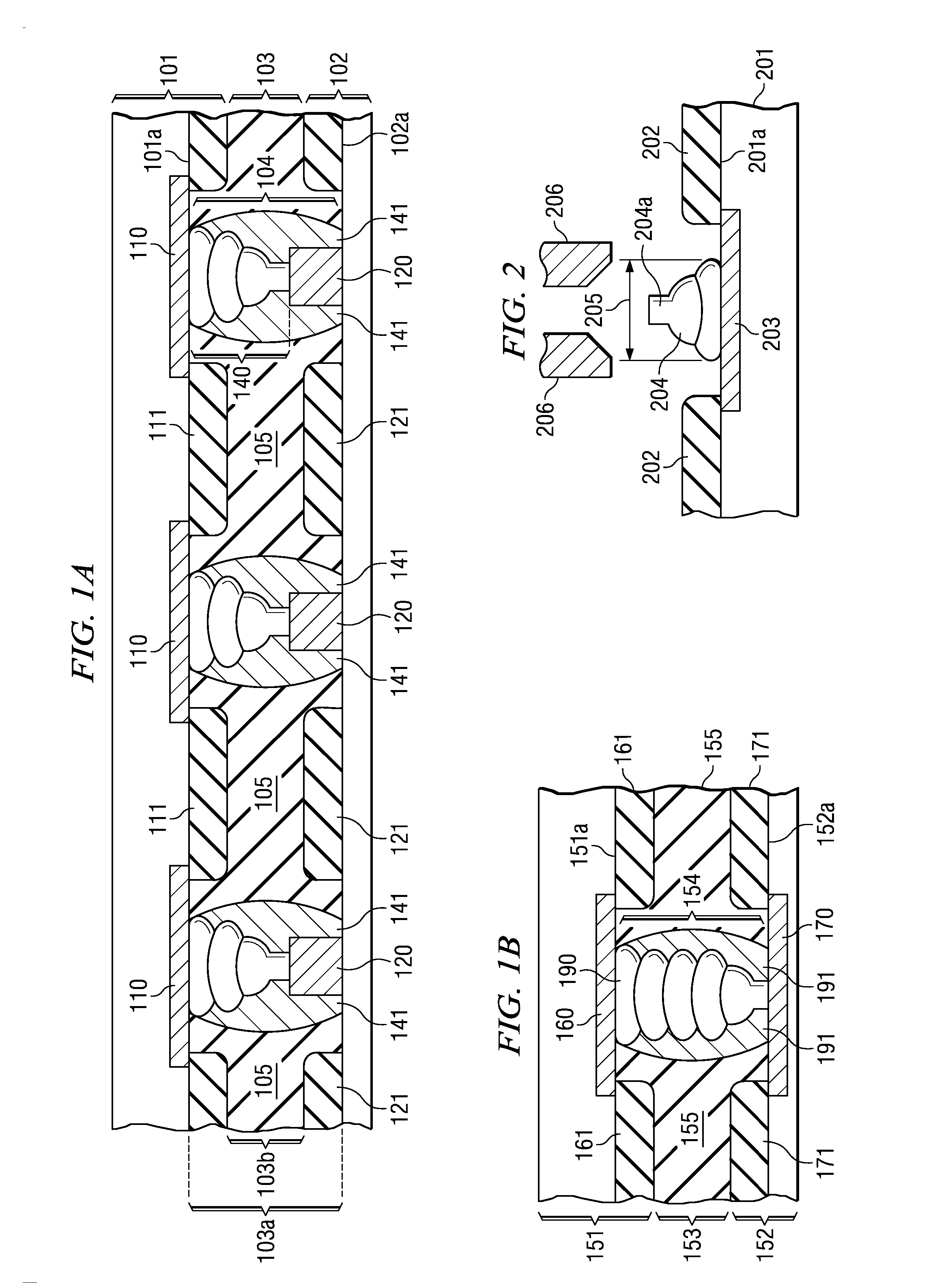Flip-Chip Device Having Underfill in Controlled Gap
- Summary
- Abstract
- Description
- Claims
- Application Information
AI Technical Summary
Benefits of technology
Problems solved by technology
Method used
Image
Examples
Embodiment Construction
[0021]FIGS. 1A and 1B illustrate portions of assembled semiconductor devices. The device in FIG. 1A includes a semiconductor chip 101 spaced from a workpiece 102 by a gap 103, and a connector 104 bridging the gap and electrically connecting the chip and the workpiece. Gap 103 may be filled with a polymer material 105. The device in FIG. 1B includes a semiconductor chip 151 spaced from a workpiece 152 by a gap 153, and a connector 154 bridging the gap an electrically connecting the chip and the workpiece. Gap 153 may be filled with a polymer material 155.
[0022] Semiconductor chips 101 and 151 are made of a semiconductor material (such as silicon, silicon germanium, or gallium arsenide) and have an active surface (101a, 151a), which is preferably covered by one or more layers of an overcoat (111, 161) such as silicon nitride or silicon oxynitride for mechanical and moisture protection. Overcoat thicknesses range preferably between about 20 and 30 μm, but may be thinner. Windows in th...
PUM
 Login to View More
Login to View More Abstract
Description
Claims
Application Information
 Login to View More
Login to View More - R&D
- Intellectual Property
- Life Sciences
- Materials
- Tech Scout
- Unparalleled Data Quality
- Higher Quality Content
- 60% Fewer Hallucinations
Browse by: Latest US Patents, China's latest patents, Technical Efficacy Thesaurus, Application Domain, Technology Topic, Popular Technical Reports.
© 2025 PatSnap. All rights reserved.Legal|Privacy policy|Modern Slavery Act Transparency Statement|Sitemap|About US| Contact US: help@patsnap.com



